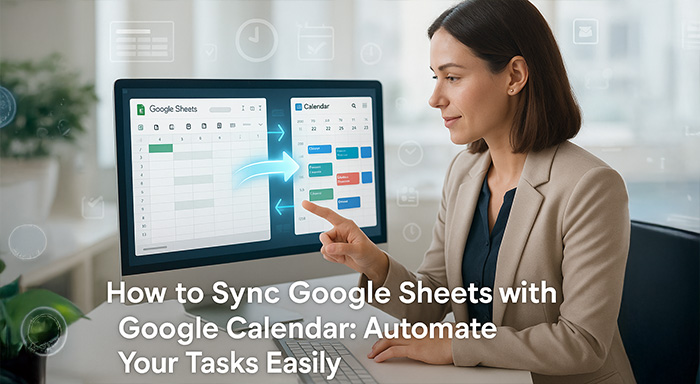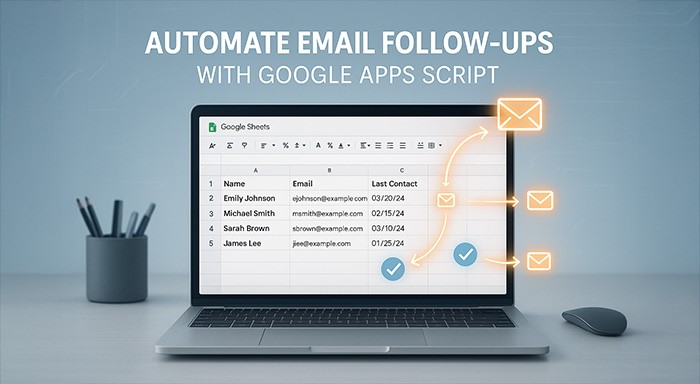If you’ve ever wanted to create a Google Apps Script dynamic web forms that saves data directly into Google Sheets, you’ve probably struggled with finding the right balance between flexibility
If you’ve ever wanted to create a Google Apps Script dynamic web forms that saves data directly into Google Sheets, you’ve probably struggled with finding the right balance between flexibility and automation. Google Forms is powerful, but it doesn’t always provide the customization businesses need for different types of data collection.
That’s where Google Apps Script comes in. With just a few lines of code, you can build a fully customizable web form that dynamically adjusts to your needs, automatically creates sheets if they don’t exist, and even updates headers when new form fields are added.
In this guide, we’ll explore a simple yet powerful script that lets you:
- Create multiple web forms (signup, feedback, survey, etc.)
- Dynamically serve the right HTML form
- Save form responses into Google Sheets
- Automatically handle new fields without breaking existing data
By the end, you’ll have a working web form automation system powered by Apps Script.
Step 1: Understanding the Script
This script powers your dynamic form and connects it to Google Sheets. Add the button to trigger data saving with ease.
Step 2: How It Works
Let’s break down the key parts of this script:
Serving Dynamic Forms
The doGet(e) function reads the ?form= parameter from the URL.
- Example: ...?form=signup will load signup.html.
- Example: ...?form=feedback will load feedback.html.
This means you can build multiple forms and host them all with one script.
Saving Data into Sheets
The saveForm() function takes the form name and submitted data.
- If a sheet doesn’t exist, it creates one.
- It always adds a Timestamp column automatically.
- It checks for new fields and updates the sheet headers.
- It appends the submitted data in the right order.
Error Handling
The function returns a success or error message, making it easy to debug and connect with frontend alerts.
Step 3: Real Use Cases
This script is extremely flexible. Here are some real-world use cases:
- Signup Forms – Collect name, email, and company details directly into Sheets.
- Customer Feedback Forms – Dynamically update questions without worrying about breaking the sheet.
- Event Registration Forms – Store participant details in separate sheets for each event.
- Survey Forms – Handle multiple surveys from the same Apps Script project.
Learn More:
Automate Your Email Data Extraction with Google Apps Script
Monitor Website Downtime with Google Apps Script
Step 4: Benefits of This Approach
Customizable—You’re not limited by Google Forms’ design.
Automated—No need to manually create sheets or headers.
Scalable—Manage multiple forms in one script.
Beginner-friendly—easy to extend with more features like email notifications.
Step 5: Deploying the Web App
- Open the Apps Script editor.
- Paste the code into Code.gs.
- Create HTML files for your forms (e.g., signup.html, feedback.html).
- Go to Deploy > New Deployment > Web app.
- Choose “Anyone with link” as the access level.
- Copy the URL and test:
- ...?form=signup → loads signup form
- ...?form=feedback → loads feedback form
FAQs for Google Apps Script Dynamic Web Forms
Q1. Can I add validation to my forms?
Yes, you can add JavaScript validation in the HTML files before calling saveForm().
Q2. Will it work if I add new form fields later?
Yes! The script automatically updates headers in Google Sheets.
Q3. Can I store data in different spreadsheets?
Yes, just modify the SPREADSHEET_ID or pass it dynamically.
Q4. Can I trigger emails after form submission?
Absolutely. You can add MailApp.sendEmail() inside saveForm() for notifications.
Conclusion
With just a few lines of Google Apps Script, you can turn simple HTML forms into a powerful data collection system that automatically saves structured data into Google Sheets.
Unlike Google Forms, this method gives you full control over design and functionality. Whether you’re building signup forms, surveys, or feedback systems, this dynamic solution saves time and ensures your data is always organized.
Respond to this article with emojis






